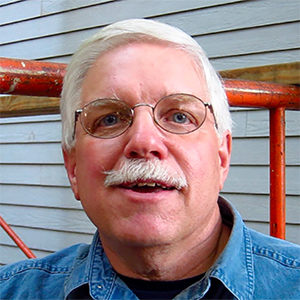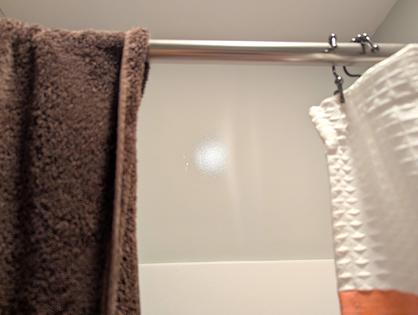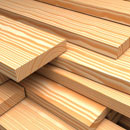Ask the Builder: How to minimize mildew in your bathroom
Do you wage a constant war against mold and mildew in your home, especially in your bathroom? You’re not alone. Millions of people fight this scourge, and businesses have tried to develop all sorts of products to slow or stop the growth of this ugly, black organism.
Your chances of slowing mildew and mold growth increase exponentially once you understand the basics of how and why it flourishes inside and outside your home.
Mildew and mold are very similar to fire. Have you given much thought to what you need to have a fire? You need just three things: fuel, oxygen and a heat source. Take away any one of those three, and you don’t have a fire.
Mildew and mold need just three things to grow: mold spores, food and water. Eliminate just one of those, and you don’t have mold and mildew. It’s pretty much impossible for you to eliminate mold spores in your home. There are millions and millions of them coating just above every surface in your home. You’d need constant, expensive filtration systems to capture these tiny spores. Only high-tech laboratories can afford this type of filtration.
You have mildew and mold food all over your home. Dust, grease, body oils, soap film, etc., are all excellent food sources for mildew and mold. You can eliminate these by doing a deep clean of every surface in your home. Who has the time for this? I know I don’t. You’d have to be cleaning like crazy each and every day.
That leaves you with water. Eliminate water and you’re golden. This is why folks who live in the desert or a very arid climate have fewer issues with mold and mildew than those of us who get lots of rain.
Let’s talk about hot, steamy showers. I’m talking about the ones where, when you exit the shower, so much condensation has formed on the mirror that droplets of water have run down the glass.
You probably think the condensation just forms on the mirror. You’re wrong. I’m sure you remember your high school physics class about dew points, right? All the surfaces in your bathroom are pretty much the same temperature as the mirror before you turn on the hot water. Exterior bathroom walls in cold climates are very problematic. The surface of the wall could be five or 10 degrees lower than the mirror surface!
This means that condensation forms on the walls, ceilings and all other surfaces in the bathroom in addition to the mirror. You don’t see the condensation because the surfaces are not reflective — but, believe me, it’s there.
I know you can’t eliminate water or water vapor in your bathroom. Your challenge is to minimize as much of it as possible to stop or minimize the mold and mildew you so dislike.
You can start with an excellent bathroom exhaust fan. Most homes have ones that do very little to exhaust the water vapor. The best ones will suck hundreds of cubic feet per minute of moist air and expel it to the outdoors. Never allow this humid air to dump into an attic space or out under a roof overhang. Install a roof vent or a wall vent outlet, much like a dryer vent, on vertical walls.
Keep in mind that these powerful fans must be able to pull into the bathroom the same amount of air they’re sending outdoors. This means you may need to crack the door a bit or install a new louvered vent in the bottom of your bathroom door. You can also keep the bathroom door open a bit, but this eliminates complete privacy.
In you live alone or are not overly modest, you might be able to shower with the bathroom door open. This will help send much of the steamy water vapor out into the rest of the home, where it mixes with drier air. I know this will make the bathroom cooler, but you can offset this by installing a radiant heater in the bathroom to keep you toasty warm in your birthday suit.
Here’s the hard part. Mold and mildew will not have a chance as long as you dry off all the surfaces in your shower area. A high-quality squeegee can help. You need to get all, or much of, the liquid water from the glass, tile or acrylic surfaces into the drain. You can also use old towels to dry off the surfaces. Do this, and I can almost guarantee you that your caulk and grout will never have a mold or mildew issue.
It’s easier said than done. You may still be in a sleep daze, or running late, and can’t take the extra minute it takes to dry off everything. I get it. You may want to install a vertical oscillating fan in your bathroom that you can turn on as soon as you have your robe on.
Do you have a shower curtain? Be sure to wave it back and forth to try to get water off of it. Don’t pull the shower curtain all the way across the shower area to make it look pretty. You need air to get into the shower. Keep glass shower doors open after you leave the bathroom.
Leave the bathroom door wide open after you walk out. Your goal is to have all the surfaces in the bathroom dry as rapidly as possible. Do whatever it takes to get the condensation to evaporate as fast as possible.
Subscribe to Tim’s FREE newsletter at AsktheBuilder.com. Tim offers phone coaching calls if you get stuck during a DIY job. Go here: go.askthebuilder.com/coaching
©2025 Tim Carter. Distributed by Tribune Content Agency, LLC.





























Comments